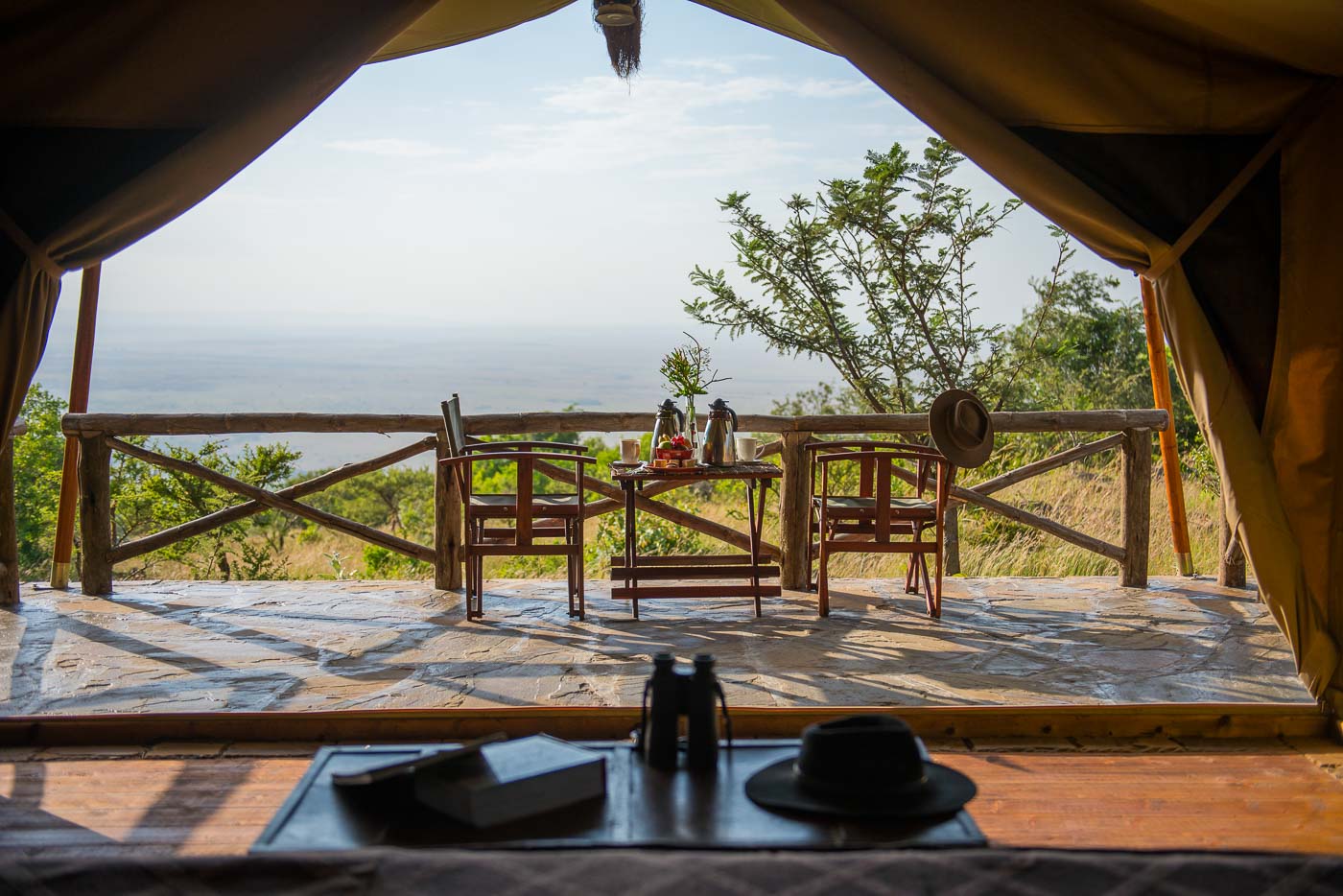The most extreme and breathtaking landscapes don’t always come right out and present themselves–you have to track them down (often with a little help from the experts). For our trip to Torres del Paine, Chile’s most remote and alluring national park, EcoCamp Patagonia was our outfitter of choice. Their professional guides and luxurious accommodations turned what seemed like a wild abyss, into an inviting, indulgent, and invigorating oasis.
The five-star treatment started with a hotel pick-up all the way in El Calafate, Argentina and being shepherded across the Chilean border to Puerto Natales. There we were greeted with another chauffeur who dropped us off at the cutest gourmet cafe to regain our strength and get a taste of the incredible Chilean wines and meals to come.
Our drive to EcoCamp kept our jaws agape for the entire ride. The massive mountain peaks, glacial lakes, and soaring condors had us pulling over for photo stops every couple miles. Thank goodness for a patient driver!
EcoCamp is made of geodesic dome structures, inspired by the sturdy, agile, and natural homes of a 15th-century nomadic Patagonian tribes. Leaving as little footprint as possible, all amenities are powered by solar and hydro energy and the camp’s sophisticated compost system combats nearly all waste.
As fate would have it, EcoCamp officially refers to their style of lodging as “Glamping” and in the most luxurious sense of the word. Our honeymoon-worthy Suite Dome had a massive canopy bed with the coziest bedding, a fireplace, and chic lighting to set the mood.
Then for the ultimate feature…an unobstructed view to the majestic Torres. The three jagged peaks are the “towers” that give the park its name and much of its allure.
There are infinite adventures to be had in Torres del Paine and your fun, friendly and knowledgeable guides can help make any of them possible—from the iconic “W” trek around the Torres to Patagonia Puma tracking. To get our bearings we started with the scenic drive through Torres del Paine National Park and a sunset sail to Glacier Grey. Our guides gave us a great overview of the park pointing out the various peaks, available hikes, lakes and the llama’s adorable cousin, the Guancos.
We arrived to the harbor and felt that between the floating icebergs and the stunning Almirante Nieto peaks, we could have gone home happy…but the gorgeous Glacier Grey was waiting for us in the distance.
As we sailed closer to Grey and as its electric blue crevasses came into focus, we began to grasp the magnitude of the Southern Patagonia Ice Field: the second largest contiguous extrapolar ice field left in existence. To top off the day, the crew served everyone a round of whiskey on the rocks (aka mini glacial icebergs).
Unlike most hotels, EcoCamp makes camaraderie amongst fellow glampers a top priority. Every night a cocktail hour is held in the Core Dome where everyone gathers for Pisco Sours, a bounty of appetizers (scallops, cheese, olives, meats, the works!), and to recount stories from their day exploring the park. Dinner follows, serving delights like quinoa gnocci and grilled lamb paired with Chilean wine (all included in the price of your stay).
As much as we would have loved to stay a week to trek “The W,” we got a taste with a fabulous day hike to the base of the Torres. Ascending the gorgeous and windswept moraine (Patagonia vocab word meaning a U-shaped valley shaped by a glacier), we arrived to the namesake towers. The vista literally took our breath away as we stared at the raw cliff face, teal lakes, and snow-capped peaks.
Patagonia is one of the most gorgeous places on the planet, with Torres del Paine its crown jewel…but it’s the accommodations, cuisine, service and expert guiding of EcoCamp that truly made this place shine.
Mike and Anne Howard left on their honeymoon in 2012 and have been traveling the world ever since. HoneyTrek.com chronicles their adventures across 7 continents, 44 countries, and counting! Their writing, photography, and the story of the “World’s Longest Honeymoon” can also be found on Condé Nast Traveler, BBC Travel, The Knot, Los Angeles Times, CBS, and dozens of other international publications. Connect with @HoneyTrek on Facebook, Instagram, and Twitter.

























